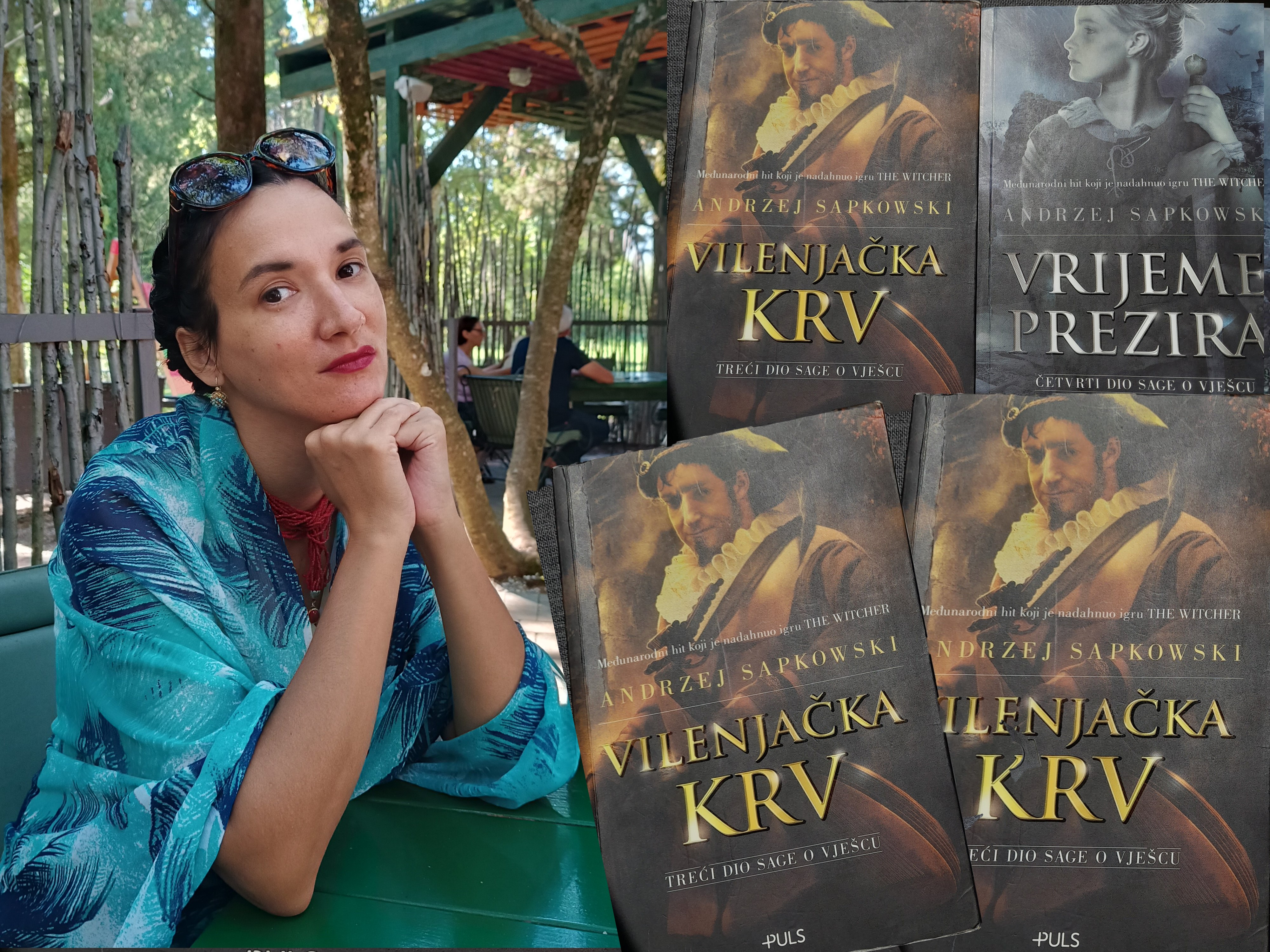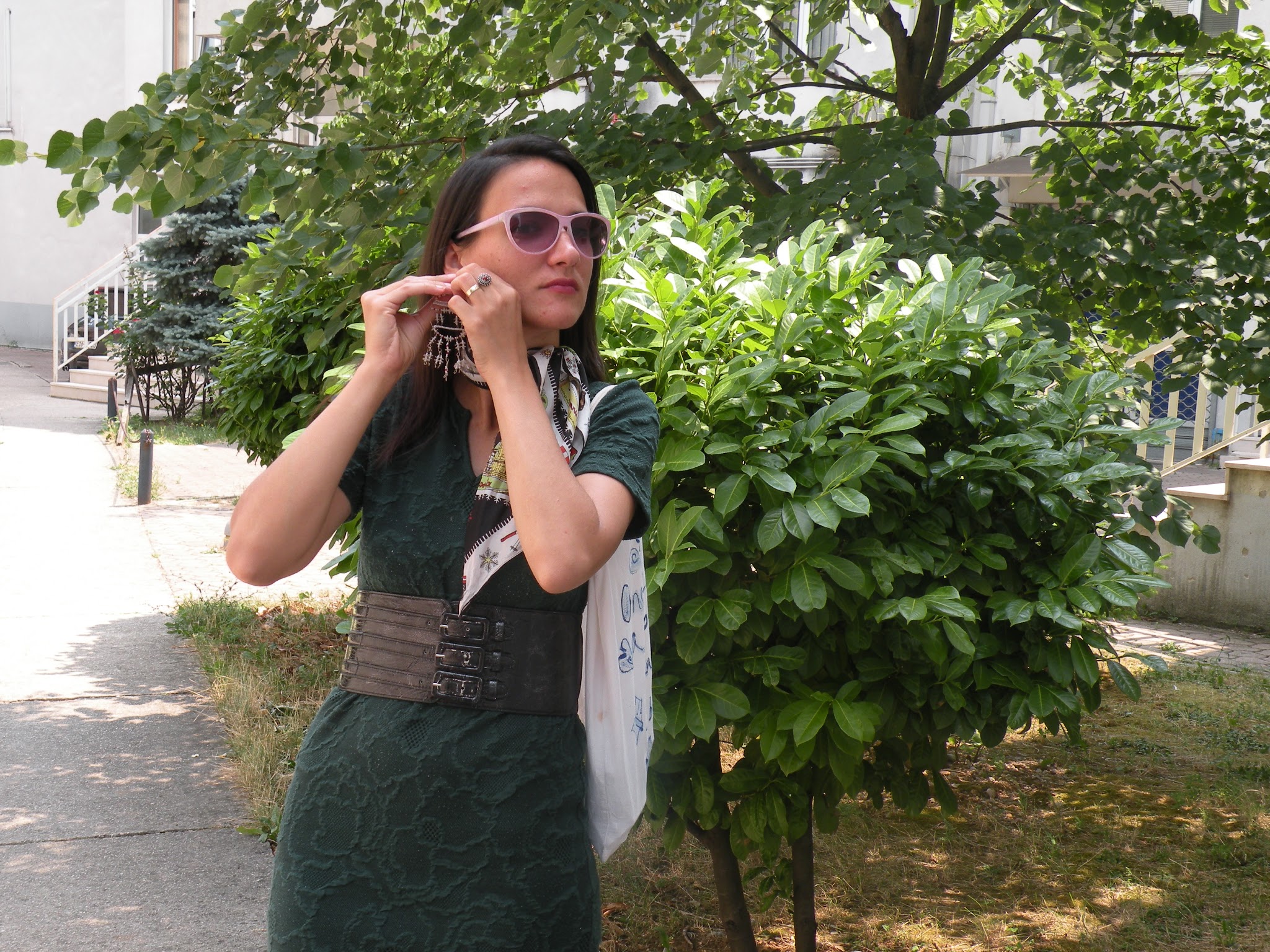VISIT TROGIR TOWN (CROATIA) WITH ME! SUMMER STYLING FOR AUTUMN!
Hello beautiful people! How are you doing? Today I'm taking you to Trogir town in Croatia. This absolutely gorgeous town has a special place in my heart. As a lover of history, I just cannot get enough of it. Hands down, it's one of my favourite towns in Croatia. I thoroughly enjoy my every visit to Trogir. Today I'll share photographs from one of my visits! It might be hard to believe, but these photographs were made once Autumn has already started. Well, the beginning of Autumn often feels like Summer in Mediterranean countries and Croatia is no exception. The weather continues to be warm and sunny long after September has started. This travel post was long in making as these photographs were taken about a year ago (but I just haven't managed to post them before). I haven't had the chance to visit Trogir this Summer or Autumn, but I was there in Spring (in May to be more precise) and I had a lovely time.
Back in May I took my French students for a day of studying English in the open. Conversational classes are always fun to do in the open. Sometimes it is nice to get away from a typical classroom. What a better place to have a conversational class than a city as beautiful as this one? Prior to my Spring visit (when Trogir served as my 'classroom in the open'), I had visited the city with my husband. We enjoyed playing the tourist and we took a lot of photographs. We have also visited island Čiovo. I bet a lot of people visit Čiovo island without even realizing it as you can get there in no time by crossing a bridge from Trogir town. In fact, Trogir itself is located on a little island between coastline and Čiovo island. More about our visit to Čiovo some other time. Today we'll focus more on Trogir town. For my visit to Trogir, I chose a sustainable outfit. In other words, I shopped my closet again! In these photographs, you can see me sporting a navy print dress from Mana (10 ways to style it here), a pair of white sandals (20 ways to style them here), a statement necklace and a mini bag.

MY PREVIOUS VISITS TO TROGIR CITY
TROGIR CITY PART 1 2019
TROGIR CITY PART 2 2019
This charming historical city is located on a small island between Croatian coastline and island Čiovo. It is located only 27 kilometers from Split city. Moreover, it's only a five minute drive from the airport Split. In fact, airport Split is closer to Trogir then it is to Split city. If you're visiting this area or landing to Split airport, don't miss the chance to visit this little city. You won't regret it, I promise. If you want to see how this place looks like in summer time, feel free to visit this Trogir travel post of mine.
Trogir has 2300 years of continuous urban tradition. Its culture was created under the influence of the ancient Greeks, and then the Romans, and Venetians. Trogir has a high concentration of palaces, churches, and towers, as well as a fortress on a small island, and in 1997 was inscribed in the UNESCO World Heritage List. "The orthogonal street plan of this island settlement dates back to the Hellenistic period and it was embellished by successive rulers with many fine public and domestic buildings and fortifications. Its beautiful Romanesque churches are complemented by the outstanding Renaissance and Baroque buildings from the Venetian period", says the UNESCO report.
Trogir is the best-preserved Romanesque-Gothic complex not only in the Adriatic, but in all of Central Europe. Trogir's medieval core, surrounded by walls, comprises a preserved castle and tower and a series of dwellings and palaces from the Romanesque, Gothic, Renaissance and Baroque periods. Trogir's grandest building is the church of St. Lawrence, whose main west portal is a masterpiece by Radovan, and the most significant work of the Romanesque-Gothic style in Croatia.
The most important sites include:
- Historical city core, with about 10 churches and numerous buildings from the 13th century
- The city gate (17th century) and city walls (15th century)
- The Fortress Kamerlengo (15th century)
- The Duke's Palace (13th century)
- The Cathedral (13th century) with the Portal of Master Radovan, the unique work of this Dalmatian artist
- The big and small palaces Cipiko from the 15th century
- The city loggia from 15th century
The St. Sebastian's Church was built in 1476 as a votive church or an offering given by the citizens of Trogir in thanks for deliverance from the plague. The front of this Renaissance building, which was executed by Niccolo di Giovanni Fiorentino, is decorated with the sculptures of St. Sebastian and Christ the Saviour. It displays the coats of arms of Bishop Giacomo Torlon and that of the duke Malipiero. Above the front rises the two-story tower of the town clock. A part of the eastern wall contains the remains of a centrally planned church with six apses dedicated to St. Mary. Against the west walls rests a plaque bearing names of the fallen defenders in the Croatian War for Independence.
The Town Loggia of Trogir was first recorded in documents of the 13th century. It served as a furnished public gathering space, and on certain dates and hours it was used by the communal legal service, as a place were contracts were signed, official announcements made, laws proclaimed, and where law proceedings took place. In 1471, the workshop of Niccolo di Giovanni Fiorentino executed a relief of Justice on the eastern wall, depicting the Venetian lion with S. Lawrence and B. John of Trogir, both guardians of the city. It was, in fact, a monument dedicated to the Republic of Venice. The central field with the lion was removed in 1932. On the south wall, the relief of a horseman depicting Petar Berislavić, viceroy of Croatia (1513–1520), was done by Ivan Meštrović. The Loggia was renovated in 1892.
The Garagnin-Fanfogna Palace is constituted of two blocks of Romanesque and Gothic buildings, incorporated into the ensemble in the second half of the 18th century, after the plans of Ignacije Macanović. The two-story building with the stone stairway situated on the south side originally had an economy purpose. Today its ground floor houses the town lapidarium within which the city walls of the Hellenistic Tragurion are presented. On the first floor there is Cata Dujšin-Ribar Gallery. The main entrance to the Palace with a lobby and a staircase was situated on the east side, in the main street, and decorated with a Late Baroque elements characteristic of the Macanović workshop. In the interior there is the original 18th century drawing room embellished with stucco decorations. The library owned by Ivan L. Garagnin (1722–1783), a numismatist and collector of archaeological monuments, is decorated with wall paintings portraying philosophers and writers. The ensemble houses collections of paintings and graphics from the 17th and 18th centuries and the Town Museum.
The Museum of sacred art is hosted in the Late Baroque building on the Trogir main square, dating from the 18th century. There is a rich collection of early Dalmatian and Venetian sacred paintings (14th–15th century) with masterpieces of Gentile Bellini, Paolo Veneziano, Quirizio da Murano and others. Works of local masters, paintings of Blaž Jurjev Trogiranin [Blase, son of George from Trogir] or the 13th century polyptych of the cathedral's high altar are exhibited in the Pinacotheca.
The Santa Maria de Platea belongs to the early 9th century hexafoil patern churches. It is the central type building, consisting of a high dome surrounded by six apses, in the manner of Carolingian chapels. In the 17th century visitation four altars were described: the high was dedicated to the Assumption of Mary; the Renaissance one, built in 1463 was dedicated to St. Jerome; the remaining two were dedicated to St. Mary of Loreto and St. Lucy respectively. The church was demolished in the mid 19th century, its only image is preserved on the 18th century French illustrator Ch. L. Clerisseau's drawing. The apses had three niches divided by pilaster strips on the outside surface wheres niches and windows gave rhythm to the tambour of the dome. To the west there was a portico used as a medieval courtroom, street was closed by the city clock tower in the 15th century.
























Que bella ciudad. Te mando un beso.
ReplyDeleteTrogir looks very similar to Rhodes Town with it's World heritage status, glorious weather and fantastic architecture. I love that Summer remains in most parts of The Med until late into October, we're tempted to squeeze another holiday in as neither of us want Summer to end!
ReplyDeleteYour dress is lovely! xxx
Trogir is a world heritage gem! A wonderful city in the heart of Dalmatia and Croatia, full of history and beautiful churches! It is clear to me why you yourself are delighted with Trogir, because every centimeter in it is a special story about its rich history! And you look beautiful as always, you made Trogir even more beautiful with you in it :)
ReplyDeleteBeautiful city! Lovely streets! Such a great backdrop for your fashion! Thanks so much for the beautiful tour! All the best to your creativity and your art!
ReplyDeleteYou look great :) thanks for your sharing...
ReplyDeleteWhat a stunning town, I can totally understand why it's a dream destination for photographers, and why you keep returning again and again. I'm rather envious of your weather. Normally we do have some Indian Summer weather well into September, but this year we've been plunged straight into Autumn. No chance of wearing a pretty Summer dress like yours these days! xxx
ReplyDeleteWonderful photos and great outfit, I do love those heels :-D
ReplyDeleteIt looks like such a nice place to visit, you always have such interesting photos of the places you have been!
ReplyDeleteI really like your outfit too, that dress is beautiful and the turquoise necklace is the perfect pairing with it! :)
Hope you are having a great weekend :)
Away From The Blue
Summer is still lingering here as well! I didn't even wear a jacket today! What a gorgeous place that is, Ivana - no wonder you've been there multiple times. Great dress!
ReplyDeleteHave a lovely weekend, my friend!
You are so beautiful in the fantastic dress in Trogir!
ReplyDeleteI enjoy to know about beautiful places in Croatia!!
Love those accessories, bag and your smile<3
akiko
https://kimonosnack.blogspot.com